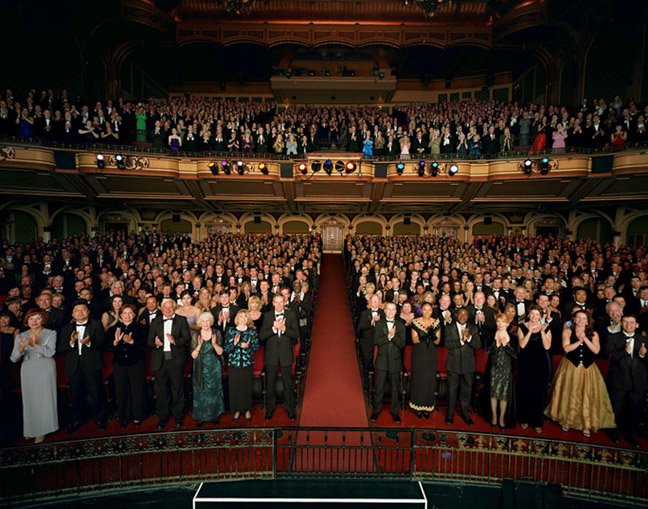First published in The Atlantic (March 15, 2013) by Megan Garber ☛ Scholars aren’t quite sure about the origins of applause. What they do know is that clapping is very old, and very common, and very tenacious — “a remarkably stable facet of human culture.” Babies do it, seemingly instinctually. The Bible makes many mentions of applause – as acclamation, and as celebration. (“And they proclaimed him king and anointed him, and they clapped their hands and said, ‘Long live the king!'”)
But clapping was formalized — in Western culture, at least — in the theater. “Plaudits” (the word comes fromthe Latin “to strike,” and also “to explode”) were the common way of ending a play. At the close of the performance, the chief actor would yell, “Valete et plaudite!” (“Goodbye and applause!”) — thus signaling to the audience, in the subtle manner preferred by centuries of thespians, that it was time to give praise. And thus turning himself into, ostensibly, one of the world’s first human applause signs. As theater and politics merged — particularly as the Roman Republic gave way to the Roman Empire — applause became a way for leaders to interact directly (and also, of course, completely indirectly) with their citizens. One of the chief methods politicians used to evaluate their standing with the people was by gauging the greetings they got when they entered the arena. (Cicero’s letters seem to take for granted the fact that “the feelings of the Roman people are best shown in the theater.”) Leaders became astute human applause-o-meters, reading the volume — and the speed, and the rhythm, and the length — of the crowd’s claps for clues about their political fortunes.
“You can almost think of this as an ancient poll,” says Greg Aldrete, a professor of history and humanistic studies at the University of Wisconsin, and the author of Gestures and Acclamations in Ancient Rome. “This is how you gauge the people. This is how you poll their feelings.” You can read the full history of applause by visiting TheAtlantic.com.


